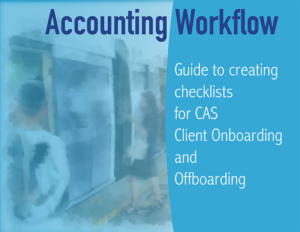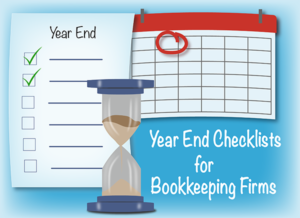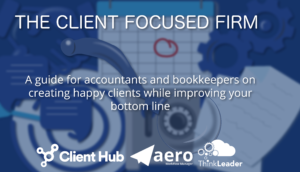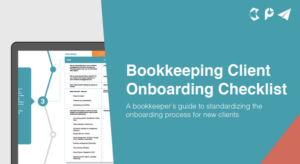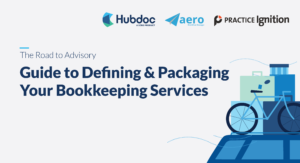As an accountant or bookkeeper, you already know that closing the books is critical to maintaining accurate financial records. But in many firms—especially smaller ones or those still relying on manual processes—the monthly close can feel like an afterthought, or worse, a painful scramble at the end of the year.
If you’re only closing the books quarterly or annually, you’re leaving your clients (and yourself) vulnerable to a range of risks—from bad business decisions to undetected errors or even fraud. The good news? With the right systems and mindset, you can close books every month efficiently, without it taking over your life.
Here’s why monthly closes are non-negotiable—and how to make them fast, smooth, and stress-free.
Why Monthly Closes Matter
1. Accurate, Timely Reports Drive Better Decisions
Your clients rely on their financial data to make critical decisions and quick adjustments to strategies, investments, and operations, leading to better resource allocation and potentially improved performance. If that data is inaccurate, incomplete, or out-of-date, they’re flying blind. A proper monthly close ensures the financial statements reflect reality. Income and expenses are recorded in the correct period, bank accounts are reconciled, and reports like the balance sheet and P&L are trustworthy. That’s essential for cash flow planning, profit analysis, and forecasting.
When clients get reliable financials every month, they stop guessing and start acting strategically.
2. You Catch Mistakes Early
Accounting is detail-heavy, and even the best professionals make mistakes from time to time. But the longer it takes to review and reconcile, the harder it is to catch those errors—and the more damage they can cause. Maybe a transaction was mistakenly recorded twice. Maybe an employee submitted the wrong expense code. Maybe a recurring journal entry didn’t post. If you’re only closing once a year, small problems can spiral into massive cleanup jobs.
A monthly close allows you to spot issues while they’re still fresh, when it’s easier (and cheaper) to correct them.
3. It Helps Prevent Fraud
No one wants to think about fraud, but it’s a real risk, especially for small businesses with minimal internal controls. When books aren’t closed regularly, fraud can go undetected for months or even years. Closing on a regular schedule adds a layer of transparency and oversight. It ensures someone is reviewing financial activity regularly, asking questions, and reconciling the numbers. In many cases, just knowing that someone is keeping an eye on things is enough to deter would-be fraudsters.
Monthly closes help you act as a financial watchdog, helping your client keep their business safe.
How to Close Books Quickly and Efficiently
Now that we’ve covered the “why,” let’s talk about the “how.” If the idea of doing a full close every month sounds overwhelming, you’re not alone. But with the right approach, it can become a repeatable, streamlined process. Watch Laura Redmond demonstrate her monthly close process.
1. Automate As Much As Possible
The more you can automate, the faster your monthly close will be. Start with bank feeds. If you’re still manually entering transactions or downloading and uploading CSVs, it’s time to embrace automation. Tools like QuickBooks Online and Xero automatically import transactions, reducing data entry and minimizing errors. Use rules and recurring transactions to categorize predictable expenses like rent, subscriptions, and payroll journal entries. Auto-reconciliations and integrated payment platforms (like BILL or QuickBooks Online Bill Pay) can also reduce friction (and help prevent fraud).
Even if automation doesn’t get you all the way to the finish line, it gets you a lot closer, a lot faster.
2. Document Your Knowledge
If only one person knows how to close the books for a client, you’re walking a tightrope with no net. People get sick. They go on vacation. Sometimes they leave. And if the process lives only in their head, the close stops cold. That’s why documenting your processes is essential. Write out the monthly steps for each client. Capture the nuances—where to find statements, how to handle specific transactions, which reports the client expects, and when.
Even better? Use a workflow management system like Aero to house your checklists and procedures. That way, your entire team can access and follow a standard process, ensuring consistency and continuity regardless of who’s doing the work.
3. Use Checklists With the Right Sequence
Checklists aren’t just helpful—they’re essential. A well-built monthly close checklist ensures that nothing gets missed and everything happens in the right order. For example:
- Make adjusting entries. Where appropriate, record recurring month-end adjusting transactions, such as depreciation expense, if applicable
- Reconcile accounts. Reconcile bank accounts, credit card accounts, loan accounts
- Verify asset and liability accounts
- Wash suspense accounts. Review wash/suspense accounts. If they are NOT zero, investigate to find what transaction did not wash through the account.
- Review Equity accounts. Review equity accounts. Look for reasonable balances and activity and accounts based on entity type.
- Uncategorized accounts. Reclassify uncategorized transactions
- Verify appropriate balances. Review BS & PL accounts for appropriate debit or credit balances and activity
- Archive financial statements. Save a copy of the Balance Sheet and P&L
- Deliver reports to client
Having this in a repeatable, standardized format (ideally within your workflow tool) prevents missed steps and keeps the team on track. Bonus: It also makes it easier to onboard new staff or delegate tasks when someone is out.
4. Assign Tasks to the Right People
The monthly close doesn’t have to be a one-person job. Split it up among your team and assign tasks based on skill level and availability. Junior staff can categorize transactions and reconcile accounts. Senior staff can handle higher-level reviews and communications with the client. Use task management software to clearly assign responsibilities and due dates. That way, everyone knows what they’re supposed to do—and when.
This not only makes the close faster, but also ensures work doesn’t fall through the cracks.
5. Don’t Wait Around—Get Started Early
One of the biggest mistakes firms make is waiting too long to start the monthly close. The longer you wait, the harder it becomes to complete, especially if you’re juggling multiple clients. Instead, start closing as early as possible each month. If you know payroll runs on the 28th, start gathering other data in the last few days of the month so you can hit the ground running on the 1st. Reconcile bank feeds weekly so you’re not buried at month-end. Set internal deadlines that are a few days earlier than the client due date to give yourself a buffer.
Momentum is everything. Don’t wait until the 10th to begin a close that’s due on the 15th.
Make Monthly Closes a Strategic Advantage
A fast, consistent monthly close isn’t just about tidying up numbers—it’s a strategic service you can offer your clients. When you deliver timely, accurate reports every month, you become more than a bookkeeper or accountant—you become an essential part of their decision-making team. You’ll also find that regular monthly closes:
- Reduce year-end chaos
- Make tax time easier
- Improve communication with clients
- Free up your time for higher-value services like advisory work
The trick is to build the right systems—automations, documentation, checklists, task assignments, and early action. With these in place, the monthly close becomes routine rather than rushed.
Before long, you’ll have a fast, efficient monthly close process that adds tremendous value for your clients—and reduces stress for your team.
Looking for a better way to manage your monthly closes?
With Aero Workflow, you can standardize checklists, assign recurring tasks, and document every process so your team can close books on time—every time. Start your free trial today.




